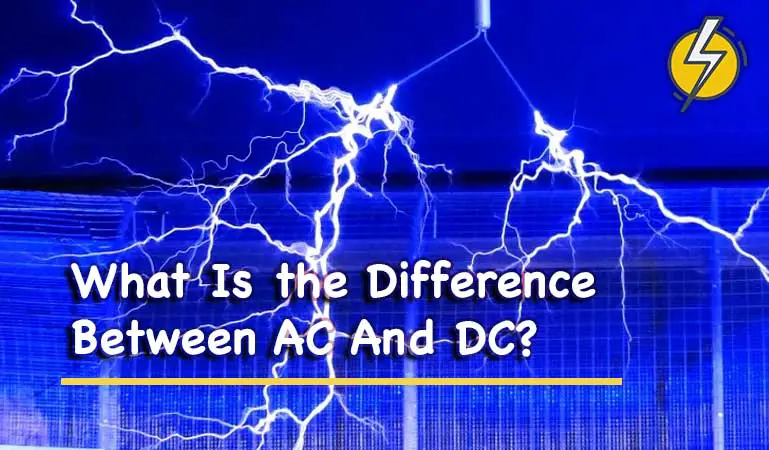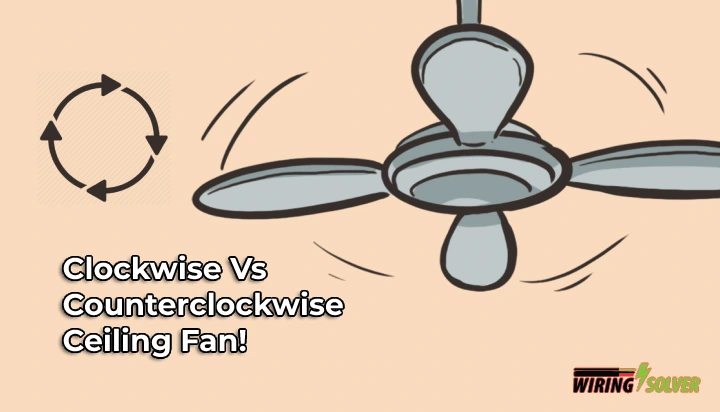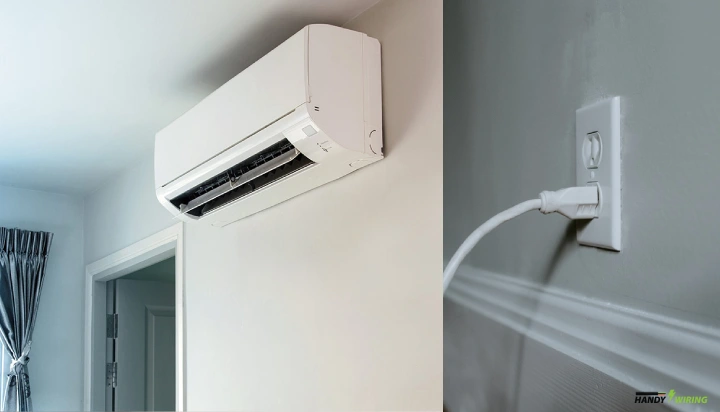Everything that is related to electrical circuits requires a source of energy to power up. Whether it is the wiring in your house, your everyday appliances, or your devices, electricity is needed for everything to run.
The two different ways electricity can flow in is the alternating current and the direct current. Both can’t be used at the same time since there is a difference in the direction of the flow of their electrons. The alternating current always changes while the direct current does not. Other than this main difference, there are many other things to know about the difference between AC and DC that we will be talking about.

Differences Between AC And DC
The correct way to pick up on how alternating current and direct current differ from each other is by knowing what AC and DC are about individually. Below we will try to understand these two current flows separately:
1. Alternating Current (AC)
As we have added before that alternating current or AC is the electricity flow that always changes. The directions of that flow of electricity can either go forwards or backward, and this can happen on repeat. This is a great choice of flow if you have to transmit electricity to places that are far away.
Every time the current flow’s direction changes, the voltage level changes along with the current. This means if the current flows in reverse then so will the level of the voltage. And the way a person can produce alternating current is with a device called the Alternator. Inside the magnetic field of this alternator, you will find a wire spun into a loop. The flow of induced current is supposed to travel along this spun wire. This wire continues to spin into different polarities within the magnetic field whenever the current and voltage change or reverses.
Areas, where alternating current is preferably used because it is most efficient and effective, are for places like a household or building internal wiring. And since the alternating current is efficient enough to cover long-distance flows, various office outlets can turn to AC as a solution. This does include providing electricity to devices and equipment inside the buildings too, like refrigerators, ovens, washing machines, computers, televisions, electric motors, and others. And to convert voltages from high to low or vice versa, you can use transformers to change the alternating current.
2. Direct Current (DC)
When the direction of the flow of current is constant, then the current flow is known as direct current or DC. The electrons in direct current flow are always in unidirectional flows. The level of the current can change with time, but the direction will always stay the same no matter how much time passes and no matter what level the current or voltage is on. The polarity of the voltage can never go in reverse like the voltages in alternating current.
To produce direct current, you will need batteries along with cells that are electrochemical and cells that are photovoltaic. It is also possible to convert alternating current into direct current with the help of a transformer, a rectifier, and a filter. The current flow of the power supply is stopped from being reversed, with the help of the transformer and rectifier. The filter is then used to prevent any current pulsations from happening when the rectifier is in use. Then the alternating current switches to direct current.
Places direct current or DC is popularly in use is for electronic devices, vehicles, factory equipment, small machinery, welding tools, large appliances in your household like lawn mowers, etc.
How They Differ: AC Versus DC
The various points in which alternating current and direct current differ from each other directly are given below:
Energy Level:
Alternating current’s energy flow can handle long distances, that include from city to city. Whereas direct current needs to be used for voltage traveling between appliances nearby.
Electron Flow:
The flow of the electrons in alternating current can go back and forth and change directions whenever; also called bidirectional flow. But the electron flow in direct current can only go forward; also called unidirectional flow.
Cause Of Direction Flow:
In the alternating current there is a wire with a rotating magnet causing the flow change and in direct current, the wire and magnetism are steady and cause still flow.
Produced From:
Alternating current is created from an alternator, while direct current is created from a battery and solar cells.
Also Read: Difference Between Volts And Amps?
Final Words
AC and DC have proven to be very different from each other. However, each type of current can be converted into the other very easily in case you wanted a change in the current flow. In most cases, alternating current is more popular than direct current because of how it’s more advantageous while direct current is very constricting and has many conditions to watch out for.
Knowing the difference between AC and DC will become useful when you’re about to buy certain equipment or appliances that might need a different energy flow than the one your other appliances use. So, the above details and differences should help you understand.


![Parallel VS Series Circuit [Difference and Comparison]](https://wiringsolver.com/wp-content/uploads/2022/03/Differences-Between-Parallel-and-Series-Circuits.jpeg)



